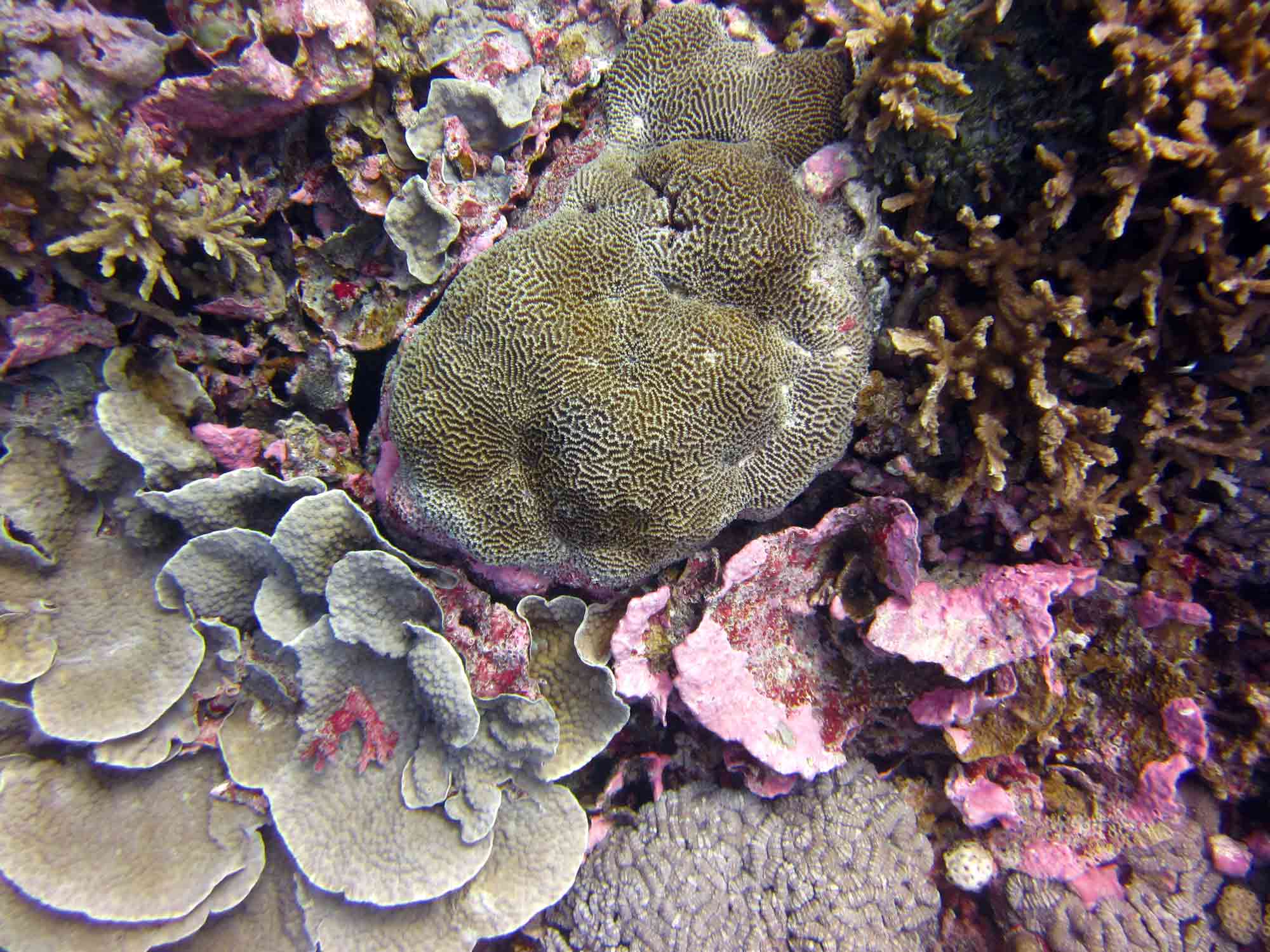A Photoquadrat is Worth a Thousand Words

This is an image taken during a photoquadrat survey on Kanton. Here you can see 4 different species of coral and lots of pink crustose coralline algae. These are two essential reef building taxa and are signs of a healthy reef. Each photo encompasses ~0.75 m2 of reef.
Part of our mission in the Phoenix Islands is to try to understand how coral communities here were affected by the large-scale bleaching event that swept the Pacific in 2015. Nobody was present in the Phoenix Islands throughout the course of the event, but one way we can assess past changes in coral communities is by conducting standardized surveys at the same locations repeatedly over time.
In order to cover as many sites as possible we are using a survey technique called photoquadrats. This technique requires two divers to lay two 25-meter (80-foot) transect lines along the 10-meter (33-foot) depth contour and then take photographs every two meters (six feet) along each line. To standardize the area captured in each image we place a pvc pole in the photo frame that is sized to keep the camera roughly one meter (three feet) off the bottom so that we capture a consistent area of reef every time.
The nice thing about photoquadrat surveys is that they only take about 15 minutes, which allows us to spend the rest of the dive collecting coral tissue samples and searching for corals that we will core. All of the photographs collected during these surveys will be analyzed back at WHOI when we return. One of us will place a point over every organism (e.g., coral, algae, sponge) in every photo and then identify each organism to the lowest taxonomic level possible (e.g, genus or species). This analysis will provide us with an estimate of the area of the reef that is covered by living coral or other organisms.
The coral communities of the Phoenix Islands have been monitored using these methods since the early 2000s. By comparing the percentage of live coral cover in our surveys with previous surveys of the same locations, we will be able to examine how the large-scale bleaching event affected the coral communities within PIPA. In addition, we successfully recovered a temperature logger that was deployed on Kanton in 2015, so we now have temperature data from on the reef during the bleaching period. This will help us understand how warm the water was around Kanton and how that may be related to changes we observe in the coral community. We hope to recover additional loggers from the other islands so we have temperature records throughout PIPA from this important time period.
Our first observations of the reefs of Kanton are that they are in good health. Across the eight sites we surveyed, some look like they may have experienced coral mortality but at most places we see many healthy coral colonies and a large number of young corals suggesting that the reefs here are still thriving despite the increasing stress associated with rising ocean temperatures. We are excited to analyze the data from the photoquadrat surveys to see how much coral cover across PIPA has changed since 2015, but for now we are turning our sights to Nikumaroro, where we hope to find even healthier corals on the westernmost extent of our trip across PIPA.